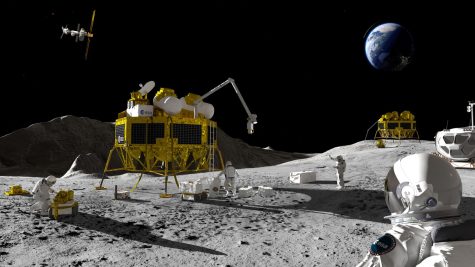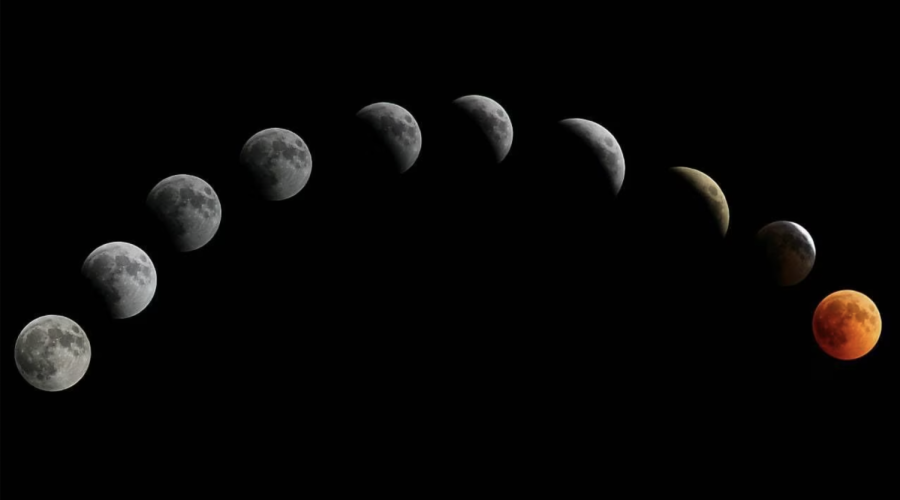Lunar Time Zone: Figuring Out Time on the Moon
March 16, 2023
The practice of daylight savings has been used for over a century, dating back to 1908. Although the task of moving the time an hour forward or backward seems simple enough, many people have difficulty adjusting to it. Our circadian rhythm, the human body’s internal clock, may struggle to adjust with the abruptly adjusted time. If daylight savings is this difficult, imagine trying to track the time on the Moon.
Scientists have avoided the question “What time is it on the Moon?” numerous times before. However, the European Space Agency recently posed a lunar time zone as a sustainable solution. Similarly to the different time zones we have on our planet, the lunar timezone plan projected for the Moon to have its own unique time zones. Many countries are expecting to explore the Moon further, meaning that proper communication and accurate information will be crucial to future success. For instance, the M1 lunar lander, built by I-Space, a private Japanese lunar robotic exploration company, is planning to land on the Moon in April. Gradually, more space exploration companies are sprouting as time passes, including China which recently completed the construction of its own space station and hinted that Chinese astronauts will be on the Moon by the year 2030, according to The New York Times.
For space agencies, timekeeping and communication is imperative. Jack Burns, director of the Network for Exploration and Space Science at the University of Colorado, Boulder, claimed that “communication based on the same time zone” is key to navigation between the Earth and the Moon. Additionally, Dr. Burns claimed that once the space agency is able to unlock the Moon’s lunar time zone, it will help us understand further knowledge on how we may reach Mars within the next two-to-three decades.
On Earth, humans track time using designated time units, such as seconds, minutes, hours, and days. So then why can’t astronauts just bring a clock up to space? Although that seems straightforward enough, time is different on the Moon than it is on Earth. Due to the theory of general relativity, time on the Moon passes faster because its gravitational strength is only about 1/6th as strong as that on Earth. According to The New York Times, “Time on Earth is precisely tracked by atomic clocks, but synchronizing time on the Moon is tricky because clocks run faster there, gaining around 56 microseconds, or millionths of a second, per day.” Although this seems like a trivial difference, these distinctions in microseconds can eventually pile up and cause issues for navigation systems that rely on precise time tracking.
In addition to this conflict, there are certainly many other issues that need to be addressed before a set time can be agreed upon by several space agencies. Although it is uncertain when this plan will become feasible, one aspect we know for certain is that many space organizations globally are proceeding with their Moon missions more quickly than ever. Despite this, these international communities have struggled to “settle on a common ‘selenocentric reference frame,’ allowing the consistent measurement of precise distances between points across our planet,” as stated by the European Space Agency.

NASA is set to complete a lunar landing with the Draper SERIES-2 lander as early as 2025, which is scheduled to send science and technology to the Moon, according to Space.com. This event will mark the first time that humans have set foot on the Moon since the 1972 Apollo 17 mission. With dramatic proceedings on Moon landings to occur soon, space agencies hope to successfully cooperate and foster their plan for lunar time as quickly as possible before this launch by NASA.
In the coming years, a number of these upcoming Moon missions will need to cooperate with multiple different agencies and countries that have collectively shown interest in exploiting the Moon’s potential in the future. A key factor to this coalition is communication. Indeed, without a standard lunar time, time regarding spacecraft travels are dependent on the time of the country operating the mission. According to the ESA, these plans will “not be sustainable in the coming lunar environment,” emphasizing its message to NASA and other companies aiming for the Moon.
As an alternative to lunar time zones, some have suggested basing lunar time with UTC, the Coordinated Universal Time. In other words, time on the Moon would be imported from atomic clocks on Earth which would require constant monitoring in order to align the slightly faster time on the Moon to the UTC. Compared to this impractical method, a lunar time zone is more empirical as it can be in sync from different places all around the Earth.
It is imperative to realize that corporations can not be functional without effective communication, and that creating a contemporary system with the Lunar Time Zone is essential to further refine communication systems on the Moon. Ultimately, scientists are hopeful that the fundamentals for this innovation will be able to be completed soon, paving the way for space agencies to further exploit future space missions.



















































































































































